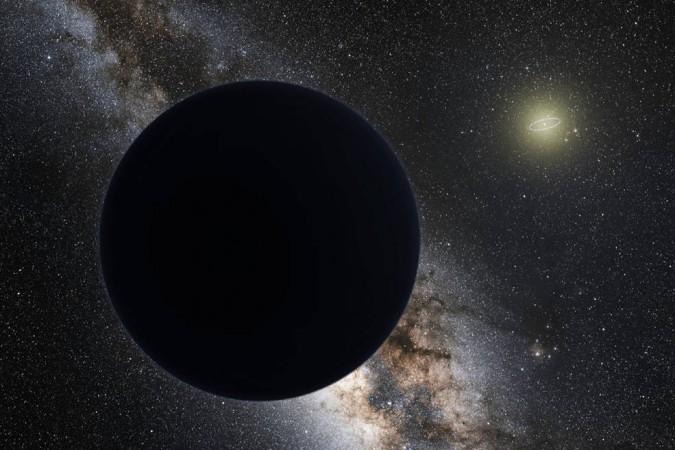
According to astronomers, Planet Nine (P9) is extending the orbits of the distant celestial bodies and mysteriously tilting the Solar System to one side. The planet is likely to be orbiting in the icy outer edges of our Solar System.
If the unofficial Planet Nine exists, it will be distant and pose no danger of collision with Earth. The planet is likely to weigh 10 times Earth's mass and 20 times farther away from the Sun than Neptune. Various indirect signs of gravitational footprints point towards the presence of the planet.
"There are now five different lines of observational evidence pointing to the existence of Planet Nine," said Konstantin Batygin, a planetary astrophysicist at Caltech in Pasadena, California, whose team may be closing in.
"If you were to remove this explanation and imagine Planet Nine does not exist, then you generate more problems than you solve. All of a sudden, you have five different puzzles, and you must come up with five different theories to explain them," Batygin added.

In January 2016, Batygin had revealed the first three hints towards the trail of Planet Nine along with his co-author Mike Brown, a Caltech astronomer.
Six known objects were found in the Kuiper Belt -- a region of icy bodies stretching from Neptune outward toward interstellar space -- which had elliptical orbits that pointed in the same direction and were tilted 30 degrees downward; this was compared to a pancake-like plane in which the planets orbit the Sun.
The computer models of the Solar System including Plane Nine pointed out that more objects should be there with respect to the solar plane.
"In fact, the tilt would be on the order of 90 degrees, as if the plane of the solar system and these objects formed an "X" when viewed edge-on. Sure enough, Brown realized that five such objects already known to astronomers fill the bill," according to a NASA statement.
According to another article published by Elizabeth Bailey, Batygin's graduate student showed that the planets present in our solar system could have been tilted by P9 during the last 4.5 billion years. This is likely to shed light on why the plane in which planets orbit is tilted by 6 degrees compared to the Sun's equator.
"Over long periods of time, Planet Nine will make the entire solar-system plane precess or wobble, just like a top on a table," Batygin said.
Another finding that indicated towards the presence of Planet Nine involves the Kuiper Belt objects (KBOs) orbiting in the opposite direction in the Kuiper Belt unlike the other bodies in the Solar System. The orbital influence of Planet Nine is likely to explain why the inner Kuiper Belt ends up getting polluted by these bodies from the distant Kuiper Belt.
"No other model can explain the weirdness of these high-inclination orbits," Batygin said. "It turns out that Planet Nine provides a natural avenue for their generation. These things have been twisted out of the solar system plane with help from Planet Nine and then scattered inward by Neptune."
ALSO READ: NASA plans supersonic jet Plane-X for super-fast futuristic travel
Batygin and Brown are using the Subaru Telescope at Mauna Kea Observatory in Hawaii to find Planet Nine.
This observatory is the best tool that can detect dim and extremely distant objects lost in huge swaths of sky, Batygin explained. "I think Planet Nine's detection will tell us something about its origin," he said.
Different explanations are given by different astronomers regarding Planet Nine. More than 800 new "trans-Neptunian objects" were discovered in a lately conducted analysis called the Outer Solar System Origins Survey. The evidence also could be consistent with a random distribution of such objects. The proof regarding the existence of Planet Nine couldn't be dismissed by a group of researchers from the University of Victoria, led by Cory Shankman.
ALSO READ: SpaceX CEO Elon Musk aims at reaching Mars by 2022: All you need to know
Past two decades, the studies of planets around other stars that are carried out have usually found super Earths or planets that are bigger than Earth but smaller than Neptune.
If Planet Nine is found, it will be a homecoming of sorts, or at least a family reunion. Over the past 20 years, surveys of planets around other stars in our galaxy have found the most common types to be "super Earths" – which weigh around 10times Earth's mass -- and their somewhat larger cousins -- bigger than Earth but smaller than Neptune.
There is a possibility that Planet Nine might be the missing super Earth of our Solar System.














